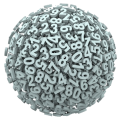In a previous article, I discussed my list of the eight most valuable metrics for triathletes. In this article, I want to address a more fundamental question. What is the point of training with data?

This question may not even seem worthy of discussion given the fact that training with data is something we simply do in the modern world. Of course we train with data. Why wouldn’t we? Data provides us with insight, knowledge, and neat facts to post on social media. We train with data because we can and because everyone else does.
But, from a performance perspective, there are crucial reasons to train with data, and I believe these reasons are often lost in a world where training with data has simply become a taken-for-granted state of affairs. When we lose sight of the underlying purpose of training with data, the devices start to control us instead of us controlling the devices. And we are more liable to fall prey to what I call the “blind faith in technology” fallacy.
The blind faith fallacy is where you come to believe the numbers you are seeing on the training device over your own internal bodily cues. This can happen with athletes new to endurance training who are still learning how to train with heart rate, pace or other metrics. Lacking prior experience with training, they lack a developed basis of comparison for interpreting the data they receive from their devices. Even experienced athletes can become overly reliant on what their devices tell them. As a result, the devices and the data control the user.
But we know that even GPS devices are only so accurate—such as when calculating pace on the fly or measuring elevation gain/loss over a route—and heart rate monitors remain fallible—such as when encountering electrical interference or losing contact with the skin. Where experience gives us a basis for overriding fallible instruments in circumspect situations, the blind faith fallacy pushes us to side with the instruments despite our best judgments.
The blind faith fallacy also makes it difficult to read the deeper meaning into the numbers provided by the devices. This is because without an understanding of the underlying rationale for arriving at the numbers, one is left to simply rely on the numbers in and of themselves. For example, where an inexperienced athlete sees a persistently low heart rate on their device during a run and keeps running faster and faster to try to elevate that number into the prescribed training zone, the experienced athlete will instead see that number as a sign of not being fully recovered and therefore as a signal to back off. In the first instance, the blind faith fallacy allows the device to control the runner; in the second instance the runner remains in control of the technology.
So to return to the opening question, what is the point of training with data? From a performance perspective, training with data allows us to monitor and measure training load and form. When we control the technology rather than letting it control us, we can target our training and gain insight into our progress, which can in turn feed into further targeted training. But beyond this obvious response is a deeper reason that leads to an interesting paradox.
The ultimate point of training with data, I argue, is to learn to perform without data. After all, the data we receive on our devices are forms of biofeedback; and the purpose of using biofeedback is to gain voluntary control over what is measured. In other words, the point of training with data is to gain greater bodily awareness. For example, the more experience we gain differentiating between training zones while wearing a heart rate monitor or GPS watch with pace readouts, the better we should become at subjectively understanding our intensity or pace without always needing to rely on the external technology. In the end, the point of training with data is to gain deeper insight into the internal bodily cues necessary for peak performance.
So as you harness the best of today’s technology to improve your performance, I encourage you to maintain sight of the underlying reason to train with data: use training devices as a tool to improve your own internal awareness.







